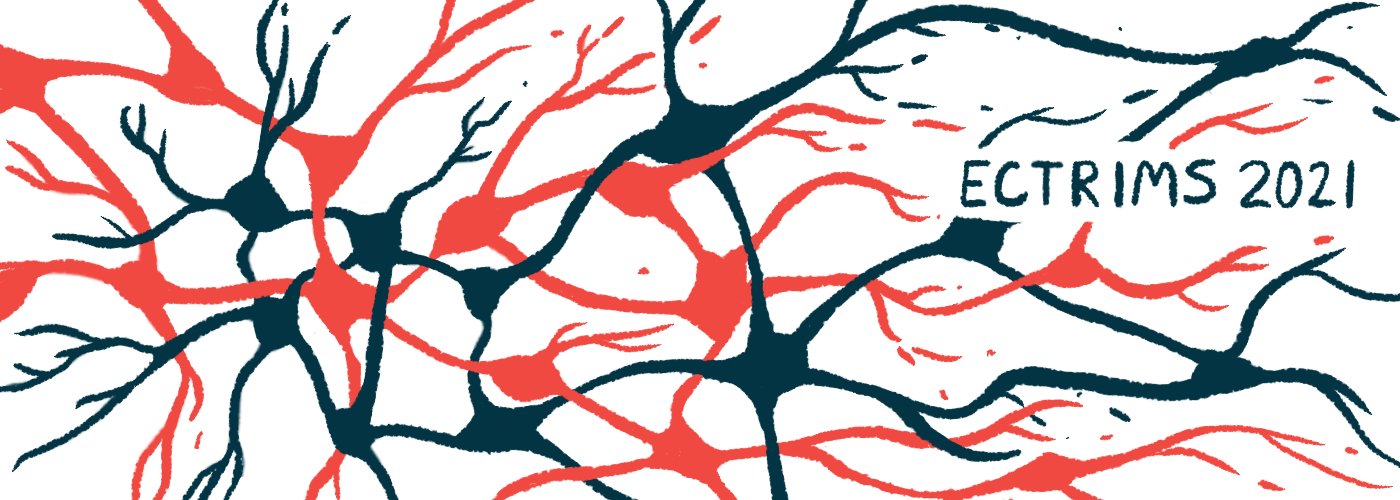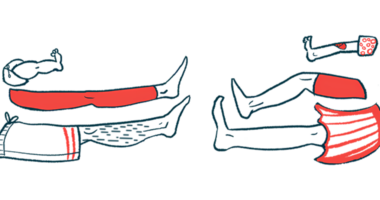#ECTRIMS2021 – Sativex Eases MS Patients’ Spasticity, Spasms in Trials

Editor’s note: The Multiple Sclerosis News Today team is providing in-depth coverage of the virtual 37th Congress of the European Committee for Treatment and Research in Multiple Sclerosis (ECTRIMS), Oct. 13–15. Go here to see the latest stories from the conference.
Sativex (nabiximols), an oral spray containing compounds found in the cannabis plant, can ease muscle spasticity (stiffness) and spasms (sudden, involuntary muscle contractions) in people with multiple sclerosis (MS), scientists report.
At 37th Congress of the European Committee for Treatment and Research in Multiple Sclerosis (ECTRIMS), taking place virtually Oct. 13–15, researchers with GW Pharmaceuticals — the company developing and helping to market Sativex — and other institutions shared new analyses of clinical trial data highlighting its effectiveness as an add-on therapy.
In one presentation, Jacqueline Nicholas, MD, a neurologist with the OhioHealth Multiple Sclerosis Center, shared an analysis of two randomized, placebo-controlled clinical trials that tested Sativex in people with MS-related spasticity.
Her presentation was titled “Nabiximols reduces muscle tone in multiple sclerosis spasticity: differential effects in Modified Ashworth Scale muscle groups in 2 randomised clinical trials.”
A total of 347 patients with MS-related spasticity were included in the analysis – 241 from the GWSP0604 Phase 3 trial (NCT00681538) and 106 from the Phase 2 SAVANT trial.
Across both studies, about two-thirds of participants were female, and the average age was about 50. The most common type of MS was secondary progressive (SPMS), followed by relapsing-remitting (RRMS) and primary progressive (PPMS) disease.
Both studies used similar designs: after a lead-in phase, patients who responded to the treatment were randomized to either Sativex or a placebo for 12 weeks, and spasticity in various muscles was assessed with a standardized measure called the Modified Ashworth scale (MAS).
Notably, SAVANT included a wash-out period after the lead-in phase, while GWSP0604 did not. Additionally, all SAVANT participants were simultaneously being treated with other spasticity-controlling medicines, while those in GWSP0604 were allowed to be off treatment.
Across all MAS subscales assessed, Sativex significantly eased spasticity compared to placebo in the SAVANT trial. In GWSP0604, the treatment trended toward easing spasticity, though none of the differences were significantly different from placebo.
Of note, the treatment’s effect was generally more pronounced in the lower limbs than the upper limbs. In most MS patients with spasticity, the symptom is more severe in the legs.
“These two pivotal studies provide convincing evidence that nabiximols [Sativex] treatment confers a measurable benefit on spastic muscle tone as assessed by Modified Ashworth scale in relevant muscle groups,” Nicholas concluded.
In a separate poster, “Nabiximols efficacy in MS spasticity: treatment effects on spasticity Numeric Rating Scale and muscle spasm frequency in 2 randomised clinical trials,” the research team analyzed patient-reported data from the same two trials.
Participants were asked to rate each day their level of spasticity and frequency of spasms over the duration of the trials. Results showed that patients given Sativex in the trial’s randomized parts reported significantly lower spasticity scores over time, than did those on a placebo.
Sativex also significantly reduced the frequency of spasms, by 11% to 37% at different times across the studies. Notably, the reduction in spasms was more pronounced in people who had experienced more frequent spasms prior to the trial.
Researchers concluded that the treatment “showed a significant and sustained treatment effect on spasticity … and spasm frequency” in people with MS.
Safety-related data from the trials were consistent with the known safety profile for Sativex, and the medication was generally well tolerated. The most common adverse events (side effects) were dizziness, fatigue, and sleepiness. Serious adverse events were reported in less than 2% of participants, and 3% of trial patients withdrew due to side effects.
Sativex is an oral spray that contains several compounds derived from the cannabis plant. Its main ingredients are tetrahydrocannabinol (THC) and cannabidiol (CBD). THC is the main psychoactive compound in cannabis — that is, it induces the “high” associated with cannabis use — while CBD is not psychoactive, but has other effects on the body.
Sativex is approved to treat MS-related spasticity in more than 25 countries, including those of the European Union, the U.K. and Canada. It is not approved in the U.S.
GW Pharmaceuticals is now part of Jazz Pharmaceuticals.






